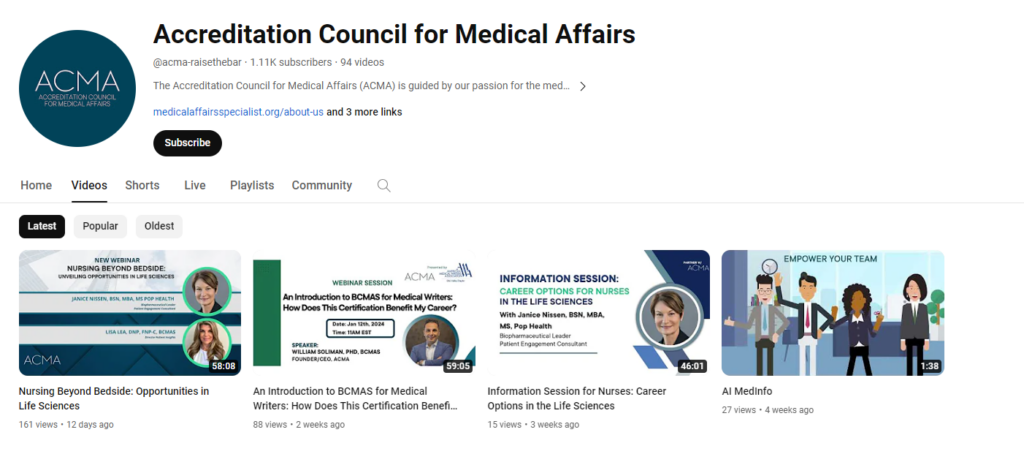The pharmaceutical world keeps spinning faster than ever. New research discoveries, changing populations, and shifting rules from oversight agencies mean drug companies have to stay light on their feet. How can marketing teams keep up and connect with the right healthcare partners? In this post, we’ll look at key B2B marketing strategies to help pharma marketers move wisely as the industry evolves.

Effective B2B Marketing Strategies for Success in the Pharmaceutical Sector
Understanding the Pharmaceutical B2B Landscape
The pharmaceutical sector generated over $1.27 trillion globally in 2020 alone. However, it faces distinct challenges, including lengthy drug development cycles, strict regulations, expiration of blockbuster drug patents, and increased generic competition.
This is why effective B2B marketing strategies are essential for pharmaceutical companies looking to promote their products and services to other businesses, such as:
- Healthcare organizations
- Hospitals
- Pharmacies
- Wholesalers
- Group purchasing organizations (GPOs)
Key growth opportunities exist through:
- Specialized data analytics: Gathering actionable insights into prescriber and buyer trends to target marketing activities accurately.
- Omni-channel strategies: Utilizing a mix of digital and traditional marketing channels to increase engagement.
- Thought leadership: Positioning subject matter experts as trusted advisors to spark meaningful physician dialogue.
However, it’s important to consider that opaque regulations make content development difficult. Companies must also respect buyer privacy while conveying product benefits. Nuanced strategies are imperative.
Strategic Market Analysis
Audience Segmentation
Successful pharmaceutical B2B marketing begins with proper audience segmentation as each customer group has unique needs.
- Healthcare professionals (HCPs): Includes physicians, nurses, and pharmacists who prescribe, dispense, or administer medications. They decide which treatments buyers receive.
- Hospitals: Provide acute buyer care and influence drug purchasing decisions.
- Pharmacies: Dispense medications to outpatients per HCP instructions for buyers.
- Wholesalers: Distribute drugs from manufacturers to pharmacies and hospitals.
- Group purchasing organizations (GPOs): Negotiate discounted drug prices on behalf of member hospitals and healthcare systems.
Competitive Analysis
Conducting a competitive analysis reveals key player strengths/weaknesses and areas of differentiation. Track competitors across:
- Market share: Monitor sales trends and shifts in product usage.
- Product pipeline: Assess new molecular entities (NMEs) to anticipate changing therapy dynamics.
- Marketing messaging: Identify how competitors position products to uncover potential gaps.
- Corporate reputation: Benchmark public perceptions of quality, transparency, and responsibility.
Digital Transformation in Pharmaceutical Marketing
Investing in digital transformation and data utilization enhances B2B marketing return on investment (ROI).
Digital Marketing Platforms
Platform | Description | Use Case |
Online Video | Engaging video content on platforms like YouTube and Vimeo | Disease awareness education, product tutorials |
Social Media | Platforms like LinkedIn, Twitter, and Instagram | Thought leadership, stakeholder engagement |
Email Marketing | Using email campaigns and newsletters | Promoting therapeutic area events/content |
Website | Corporate, product, and services websites | Host educational resources, public relations |
Data Analytics Optimization
Advanced analytics help to track physicians’ prescribing patterns, clinical interests and digital channel engagement. These insights enable precise targeting and messaging personalization to strengthen relationships.
Content Marketing Strategies
Effective content marketing fuels awareness and sales growth organically over time by offering valuable information without an overt sales pitch.
As visualized, consistent high-quality content cultivates an informed customer journey from initial awareness through consideration, preference, and purchase.
Developing Audience-Centric Content
Format | Description | Example Topic |
Case Studies | Evidence of product efficacy/safety | Hypertension medication improves outcomes |
Infographics | A visual snapshot of key disease data | Heart failure hospitalization trends |
eBooks/Whitepapers | In-depth clinical guidance | Optimizing Hypertension Treatment plans |
Blog Posts | Timely commentary on industry news | Implications of updated cholesterol guidelines |
Videos/Webinars | Engaging educational discussions | Managing pulmonary arterial hypertension |
To deliver real value, content must align with stakeholders’ key interests and address their knowledge gaps. Repurposing that content across multiple formats and channels helps amplify its reach and impact.
For example, hosting webinars or sharing informative videos on YouTube starting months before launch can raise disease state awareness and prime audiences for the new product release. These seeds are crucial for early interest. Analyzing competition through pipeline and market monitoring can further shape messaging and positioning strategies for the content. Develop assets tailored to each significant market’s guidelines and norms.
This ties the video/webinar format directly to a use case aligned with product launches and pre-launch planning. It connects to competitive intelligence to inform content approaches. And it recommends tailoring appropriately across geographies.
Best Practices for Pharmaceutical SEO
To stand out pharmaceutical companies must implement targeted SEO strategies that speak the language of both healthcare professionals and patients. Optimizing content for search engines improves visibility and builds trust and credibility with key audiences. Here are some essential best practices for effective pharmaceutical SEO:
- Keywords: Include physician terminology, drug names, disease states
- Metadata optimization: Comprehensive title tags, meta descriptions, and alt text
- Mobile optimization: Streamlined designs for smartphones/tablets
- Schema markup: Enhances search visibility of medical terms
- Local SEO: Targets geo-specific keywords by city/region
- Link building: Secures placements on credentialed health websites
To make content even more compelling, incorporate real-world examples demonstrating product impact. For instance:
Drug Name | Company | Key Success Factors |
AbbVie | Tapping unmet need for rheumatoid arthritis treatment | |
Gilead Sciences | Large HCV patient pool primed for innovative therapy. | |
Pharma | Flaws in Trial Design and Regulatory Submissions |
As these cases highlight, the level of critical unmet medical need, clinical efficacy, and excellence in trial design and regulatory approvals separate winning launches from the rest. Weaving in such tangible evidence and outcomes helps strengthen stakeholder confidence when developing audience-centric content.
Regulatory Compliance and Ethical Marketing
Pharmaceutical marketing operates in one of the world’s most highly regulated environments. Companies must adhere to extensive legal/regulatory frameworks to avoid reputational damage and financial penalties.
Key U.S. Regulations
- FDA marketing/advertising principles
- PhRMA Code on Interactions with Healthcare Providers
- Anti-Kickback Statute (AKS)
- Health Insurance Portability and Accountability Act (HIPAA)
Thorough compliance measures include:
- Mandatory employee training on the latest codes of conduct
- Documented review processes for all marketing materials
- Channel-specific guideline guardrails for rep interactions
- Regular internal and external ethics/integrity auditing
Companies should ingrain a culture focused on the highest ethical standards when promoting products. Transparency builds credibility and trust across stakeholder groups over the long term.
Partnerships and Collaborations
Strategic partnerships allow pharmaceutical brands access to new markets and lend third-party validation:
- Hospitals: Co-marketing opportunities with specialty centers spotlight expertise in certain disease states.
- Academic institutions: Research funding and clinical trial collaborations generate goodwill.
- Patient advocacy groups: Raise awareness of patient financial assistance options.
- GPOs: Secure inclusion in discounted purchasing contracts for member networks.
Building these collaborations requires strategic effort, but can expand reach and credibility when done right. Actively engage partners through routine meetings, progress reports, training, and other touchpoints.
Given the global nature of the pharmaceutical industry, it is also crucial to analyze the dynamics of top markets to shape effective launch tactics tailored to each region.
Winning Tactics for Key Markets
With these insights, we can develop launch tactics tailored to high-potential markets, focusing on strategies that resonate with researchers, clinicians, and pharmaceutical companies.
United States
- Begin payer negotiations early and highlight superior efficacy
- Enhance patient affordability programs to increase accessibility
- Ramp up DTC advertising to drive faster adoption
European Union
- Navigate decentralized regulatory procedures efficiently
- Partner with KOLs and physicians’ associations to validate clinical benefits
- Monitor individual country-level price dynamics frequently
China
- Commit assets to expand R&D and trials footprint aligned with reforms
- Forge partnerships with provincial healthcare bodies across tier-1 cities
- Develop hospital-focused detailing capabilities beyond conventional coverage
Now let’s look at other key parts of optimizing pharmaceutical product launches, such as making clinical trials more efficient and effective.
A helpful step is to study how top global pharma markets operate. This can guide the development of launch strategies that fit both the product and the unique needs of each region.
Parameters | the United States | European Union | China |
Market Size | Highest globally – over $500Bn | Second largest market after US | Fastest growing – expected to reach $170Bn by 2025 |
Regulations | A stringent approval process enforced by the FDA | Decentralized procedures through EMA | Reforms ongoing to speed up reviews |
Pricing Controls | Risk of price controls looms amid political pressures | Tighter controls exist in many countries | Centralized procurement controls prices |
Key Channels | Insurer and PBM rebates for coverage | Public healthcare systems represent the majority share | A tiered distribution health of system focused on hospitals |
Competition | High-pioneering new drugs that quickly face generics | Relatively lower competition levels | Lower but increasing R&D focus boosting innovation |
Marketing | DTC advertising allowed driving patient awareness | DTC advertising banned – physician detailing is key | Digital and content marketing gain precedence |
With these kinds of insights into favorable strategies per market, brands can optimize their approach across geographies based on market maturity, channel mix, regulatory nuances, pricing control mechanisms, and competitive forces at play.
To summarize key insights covered across effective strategies for pharmaceutical product launches, consult this infographic outlining 8 imperatives:

As visualized, a comprehensive launch plan requires early payer engagement, strong KOL validation, breakthrough designation lobbying, outcome-based messaging, patient centricity, lifecycle data generation, flawless supply chain coordination, and tactical digital engagement. Carefully orchestrating these components catalyzes adoption and sets up commercial success.
Now let’s explore best practices to track returns on launch investments.
Measuring Success and ROI
Defining key performance indicators (KPIs) is necessary to benchmark marketing investments against strategic goals across channels.
Common marketing KPIs include:
- Website traffic: Quantifies content resonance and SEO traction
- Whitepaper downloads: Gauge audience engagement
- Call center inquiries: Indicates customer interest to dive deeper
- Rx Volume: Ultimate indicator of marketing effectiveness
Set realistic targets given the lifecycle stage per product. Calculate the cost per acquired customer to assess efficiency by initiative.
Incorporating qualitative data beyond KPIs, such as social listening and rep feedback, allows for deeper context when evaluating program ROI. Refine underperforming components rather than abandoning complex omnichannel efforts completely. The comprehensive interplay between channels builds relationships most holistically over time.
Future Trends and Innovations
Multiple exciting developments in data-driven platforms, AI, omnichannel integrations, and personalized digital experiences will shape pharmaceutical marketing over the next decade.
To capitalize on these opportunities, brands should focus on:
- Agile Marketing: Use real-time data flows to guide responsive optimizations.
- Predictive Modeling: Identify negative prescription trends earlier.
- Multimodal AI: Chatbots, voice tech, and machine learning will refine experiences.
- Expanded Personalization: Customize omni-channel touchpoints based on HCP preferences.
While the regulated nature of pharma will limit speed, proactively testing and learning from nimble startups and tech partners will bolster competitiveness. Exploring potential ethical implications surrounding data usage and AI will also prime organizations for the future.
FAQ
How can pharmaceutical brands ethically use data analytics while respecting buyer privacy?
Pharmaceutical brands must anonymize buyer data and avoid tracking individuals without consent per HIPAA rules. However, aggregating population health trends to guide product and service enhancements overall is permissible and constructive for personalized medicine advancements that benefit public health.
What options exist for pharmaceutical B2B partners beyond hospitals and pharmacies?
Innovative partnership examples include collaborations with digital health apps expanding drug adherence tracking, alliances with analytics companies harnessing real-world evidence data, and deals with online medical education providers to co-develop clinical resources at scale.
Why are omnichannel marketing strategies vital for pharmaceutical brands today?
Omnichannel strategies grant physicians choice in how they wish to engage while reinforcing messaging seamlessly across forums for more memorable and impactful touchpoints. Orchestrating consistent experiences augments relationship-building to drive sales over time.
Next Steps in Pharmaceutical Marketing
This overview of pharmaceutical B2B marketing explored audience segmentation frameworks, competitive analysis approaches, digital channel integration, optimized content development, partnership models, and measurement best practices.
As regulations, technologies, and market forces continue advancing, brands must ensure strategies remain nimble and insights-driven. Partnering with specialty agencies and platforms with healthcare expertise can supplement internal capabilities as needed.
“The future of pharmaceutical marketing will hinge on data utilization, analytical precision, and omnichannel coordination to capture share amid mounting competition.”
Now is the time for brands to make bold investments in digital transformation, harness customer analytics, and cultivate strategic B2B relationships before disruptive forces make waves. Revisit this pharmaceutical marketing guide as progress unfolds in the years ahead.
The next step is to conduct an audit comparing current marketing strategies against the frameworks outlined here. An outside assessment will help prioritize the initiatives that show the most promise for supporting commercial goals and conveying your value proposition as a trusted partner focused on buyer outcomes.
From there, a tailored omnichannel plan leveraging the latest innovations can chart an exciting path forward. Reach out anytime to discuss shaping the future of pharmaceutical marketing together.
Ready to elevate your B2B marketing?
We help leading business-to-business brands hit their marketing goals. Get in touch to learn how Altitude Marketing can help you reach your peak performance.




